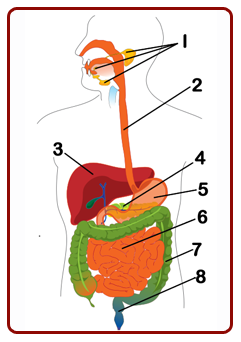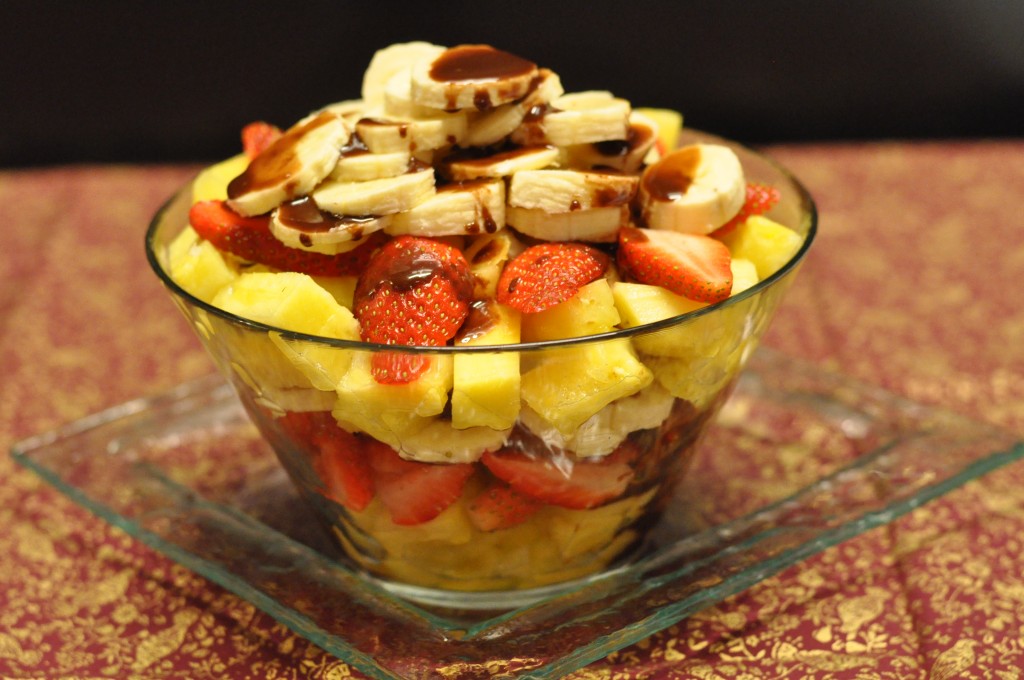
Issue #8 (Monthly Online Newsletter)
The Digestive System
Written by Judy Fleming
Our houses have an elaborate set of pipes from the toilets, the sinks, the showers and the outside sprinkler system to keep our homes working well. We keep a watch that everything is in good working order so we do not have to call the expensive plumber to fix them! We are also careful to make sure nothing is put down the drains that should not so we do not have a block that might cost hundreds of dollars to fix.
It is the same with our body’s set of pipes or our digestive system.
The digestive system is a group of organs working together to convert food into energy and basic nutrients to feed the entire body.
This system is made up of the following parts, all very necessary to make it work as a whole system.
1) Mouth: Food begins its journey in the mouth (also known as the oral cavity). Inside the mouth are many accessory organs that aid in the digestion of food: the tongue (which manipulates food for mastication), teeth (which make it possible to break the food down before it is swallowed), throat (helps to pass the food down to the next stage) and salivary glands (which makes saliva and produces enzymes that help in digestion).
2) Esophagus: This is a muscular tube connecting the pharynx to the stomach that is part of the upper gastrointestinal tract. It carries the food we have chewed down into the stomach
3) Liver: This is an accessory organ of the digestive system located to the right of the stomach. The liver weighs about 3 pounds and is the second largest organ in the body. The liver has many different functions in the body, but the main function of the liver in digestion is the production of bile and its secretion into the small intestine.
4) Gallbladder: This is a small, pear-shaped organ located just posterior to the liver. The gallbladder is used to store and recycle excess bile from the small intestine so that it can be reused for the digestion of subsequent meals. Bile works like soap in that it dissolves grease making fat soluble in water so it can be more easily digested
5) Stomach: This is a muscular sac that is located on the left side of the abdominal cavity next to the liver. The average person’s stomach is about the size of their two fists placed next to each other. This organ acts as a storage tank for food so that the body has time to digest large meals properly. There are hydrochloric acid and digestive enzymes in the stomach that continue the digestion of food. The pancreas secretes digestive enzymes into the small intestine to complete the chemical digestion of foods.
6) Small Intestine: This is a long, thin tube about the size of a quarter (25¢) in diameter and almost 20 feet long. It is located just below the stomach and takes up most of the space in the abdominal cavity. The small intestine is coiled like a hose in this small space. The main role of the small intestines is to digest the food and absorb the nutrients from the fiber. By the time fiber leaves the small intestine, about 90% of all the goodness has been extracted.
7) Large Intestine (or colon): This is a long, thick tube about the size of a tooney ($2 coin) in diameter and about 5 feet long. It is located around the small intestine. The large intestine’s main job is to absorb water to form feces to remove the toxins left from the food.
8) Rectum: Feces in the large intestine exit the body through the anal canal. All of the waste from the food we eat should get pooped out every day. The feces should be round in shape about the size of a looney in diameter and should fill the toilet and float. If it does not float this means you do not have enough fiber. This removal should be easy without pain. Make sure you eat enough good fiber, remember all fruits and vegetables contain fiber and water that helps with digestion and excretion.
The digestive system is responsible for taking whole foods and turning them into energy and nutrients to allow the body to function, grow, and repair itself. The primary processes of the digestive system include:
- Ingestion of food
- Secretion of fluids and digestive enzymes
- Mixing and movement of food and waste through the body
- Digestion of food into smaller pieces
- Absorption of nutrients
- Excretion of wastes
How can we make our digestive system work to our best advantage?
Here is a list of positive actions we need to take:
• Consume enough good fiber to help scrub through our system every day – fiber helps keep digested foods soft and bulky so they pass though the colon easily – good fiber is only found in living plant food – fruits, vegetables, raw nuts & seeds, legumes & grains.
• Consume enough liquid (water) and the best water is found in our living plant food – it acts as a lubricant to help move everything though your system – also this water helps to keep us hydrated
• Change when you eat so that you have enough time to begin digestion before you go to bed – this way the acids will not back up into the esophagus causing that burning feeling.
• Eat smaller amounts of food and find out what foods cause you problems – you can do this by eliminating some foods or trying others one at a time to see the results.
• Exercise of movement will aid in digestion – helping to move the food through the digestive tract.
• When eating cooked food take a digestive enzyme to help with digestion and take a B12 supplement to help the body metabolize carbohydrates, proteins and fats, also probiotics help to put friendly bacteria into your gut to aid with digestion.

Easy Fruit Sundae
To make this easy dessert all you need is some fresh fruit, about ¼ cup per person. Today we have:
- Pineapple (cubed)
- Strawberries (sliced)
- Bananas (sliced)
You could also have blueberries, raspberries, papaya, mangos (but if you want to use melons then it is best to have an all melon mixture of watermelon, cantaloupe, and honeydew for the variety of colours and taste).
To assemble layer the fruit in a large bowl or individual bowls – here we have used a glass bowl so you can see the layers. We have drizzled a syrup topping over the fruit just before serving or you can serve it without a topping.
Acai Carob Syrup
makes 2 cups
Blend the following ingredients in your mini blender until creamy:
- ½ cup maple syrup
- 2-4 tbsp carob powder
- 2 tbsp acai syrup
- ¼ tsp cinnamon
This syrup can be stored in a glass container in the fridge for 3-5 days.

